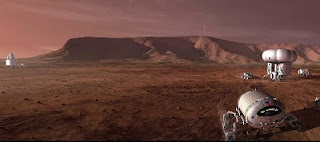
Source: Google Blog



 Growing up, December was always a favorite month of mine. School would let out for two weeks, snowflakes would start falling and I’d write my letter to Santa to remind him that I’d been especially good that year (and ask if he’d mind bringing me a few Ninja Turtles). He never answered those letters—he’s a busy guy, after all—but what if he could pick up the phone and call me instead? What if Santa had Google Voice and could easily call all the kids on his list?
Growing up, December was always a favorite month of mine. School would let out for two weeks, snowflakes would start falling and I’d write my letter to Santa to remind him that I’d been especially good that year (and ask if he’d mind bringing me a few Ninja Turtles). He never answered those letters—he’s a busy guy, after all—but what if he could pick up the phone and call me instead? What if Santa had Google Voice and could easily call all the kids on his list?
 Concept for NASA Design Reference Mission Architecture 5.0 (2009)
Concept for NASA Design Reference Mission Architecture 5.0 (2009)
Normally, if a DNS resolver requests an IPv6 address for a Google web site, it will not receive one…  …but a DNS resolver with Google over IPv6 will receive an IPv6 address, and its users will be able to connect to Google web sites using IPv6.  |



